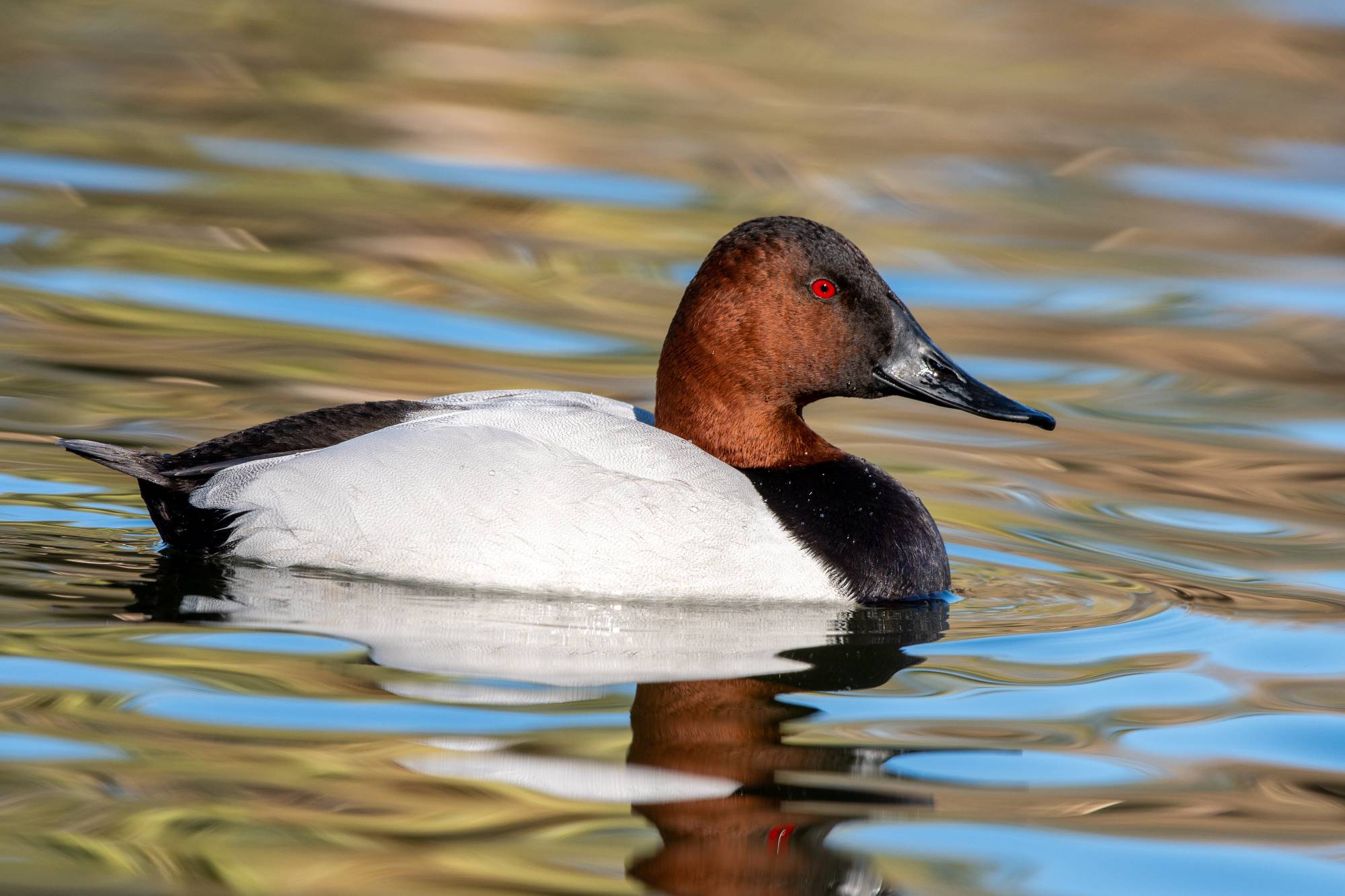
Diving Ducks in Utah
Utah's diverse aquatic habitats provide an ideal environment for a variety of diving ducks, species known for their ability to dive deep into the water in search of food. Unlike their dabbling counterparts, diving ducks have larger, heavier bodies and feet positioned further back on their bodies, adaptations that aid in diving but make them more awkward on land. These ducks are commonly found in the deeper waters of Utah's lakes, reservoirs, and portions of the Great Salt Lake, where they dive for fish, aquatic insects, and vegetation. Among the most recognizable diving ducks in Utah are the Canvasback, Redhead, and the Lesser Scaup.
The Canvasback is a large diving duck with a distinctive wedge-shaped head and long, sloping profile. Males have a striking appearance with a white body, black chest and rear, and a reddish head and neck. Females are more subtly colored with brownish bodies and lighter heads. Canvasbacks are often found in open waters where they dive to feed on aquatic tubers and invertebrates. They are strong fliers and can be seen in Utah primarily during migration and winter, where they gather in flocks on larger bodies of water.
Redheads are another species of diving ducks frequently seen in Utah. These medium-sized ducks are named for the males' bright cinnamon-red heads and black-tipped blue bills. Females are more drab, with brownish bodies and a pale blue bill. Redheads are often found in marshes and shallow bays, where they dive for plants and small aquatic animals. They are social ducks, often mixing with other species of waterfowl, and are known for their agility both underwater and in flight.
The Lesser Scaup, often simply referred to as "scaup," is a common diving duck in Utah's lakes and reservoirs. These compact ducks are distinguished by their dark heads with iridescent purple and green tones, white bodies, and black rear in males, while females are brown with white patches near the bill. Lesser Scaups are versatile in their diet, feeding on a wide range of aquatic organisms. They are gregarious and often form large flocks, especially during migration and wintering periods.
In addition to these species, Utah's waters are also frequented by other diving ducks like the Common Goldeneye and the Bufflehead. Common Goldeneyes are easily identified by their bright golden-yellow eyes, with males sporting a glossy greenish-black head and a prominent white spot near the bill. Buffleheads, one of the smallest diving ducks, have a striking black and white appearance in males and a more subdued gray-brown in females. Both species are known for their impressive diving skills, often disappearing beneath the surface for prolonged periods as they search for food.
These diving ducks contribute significantly to the ecological diversity of Utah's aquatic environments. They play a crucial role in the food web, helping to control populations of fish and aquatic invertebrates, and their feeding activities can also influence the composition of aquatic vegetation. Conservation efforts, such as protecting wetland habitats and ensuring clean, pollutant-free waterways, are essential for maintaining healthy populations of these diving ducks. Through such efforts, Utah continues to provide a haven for these fascinating species, offering birdwatchers and nature enthusiasts the chance to observe these adept divers in their natural habitats.